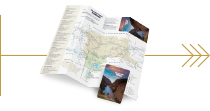Notes From the Road: Eating and Cuddling Do Not Healthy Lungs Make
The first 60-degree day in Montana’s Yellowstone Country is what I call the, “Day of Hope.” People walk around in flip flops and t-shirts, only visiting establishments where there are outdoor patios and wearing their sunglasses inside and out. It’s like there’s hope that someday, somehow, summer will be here … even if it’s still a solid few months away.And, like all those other people in Yellowstone Country, the minute the mercury sneaks past 59, I’m all of a sudden in summer mode. I’m making plans to go backpacking and creating a bucket list of trails to hike, practically running up the sides of mountains with BOATLOADS of energy.
Except that, after I take twenty steps, I’m collapsing into a heap of appendages, wheezing out my left nostril and seriously regretting the decision to eat macaroni and cheese for 95% of the winter.
Be ye not as ill-prepared as I and take a few proactive steps to ease into hiking season this year:
Take it slow
Running up the first trail that you see is not recommended. Even if you were in superb winter shape (from skiing and whatnot), you won’t be in your, “August shape,” in April. (“August shape,” is my benchmark for how fast I can fly up a hiking trail. Anything less than lightning speed is decidedly not “August shape.”)
High altitude will slow you down
Unless you’re coming from high altitude, exerting yourself in Yellowstone Country can be a very different beast. The altitude will slow you down faster than you might think. Be sure to drink lots of water and know that even if you’re in fantastic shape back home, you should take it a bit easier on your body the first time or two you head out on the trail at altitude.
Pick a trail that has a moderate amount of elevation gain
Most hiking guides will list the elevation gain, which is the total amount of elevation rise that you will achieve from the trailhead to the highest point along the hike. Depending on your fitness level, a range of 500 - 800 feet of elevation gain in a few miles is a good amount to get your heart going, but not so much that your heart will be … stopping. Caution: look out for hikes under two miles that list elevation gain upwards of 800 feet. Those may be lung-burners and could be humbling for a first hike out of the gates.
Be conscious of wildlife
And by wildlife, I really mean bears. As we all know, yet often forget when we’re on the trail, springtime is when bears come out of hibernation and forage for things to squelch their six-month hunger from fasting. And while this isn’t a fitness tip, you’ll be really glad I mentioned this if-and-when you have to slowly back away from any meandering bear families who happen to be out on their own spring hikes.


